If you’re ready to preserve the fresh flavor of green beans all year long, canning green beans is the answer. Not only is it a great way to save money, but it also puts a pantry full of wholesome, homemade meals at your fingertips. Using the right techniques, like pressure canning, ensures safety and the best taste.
Green beans are one of the best vegetables to can using a pressure canner, known for their ease of preparation and delicious taste. Additionally, pressure canning extends their shelf life, making them a convenient pantry staple.
I will provide you with a step-by-step tutorial on how to prepare, pack, process, and store your canned green beans. This is a pressure canning recipe only. This recipe comes from Ball Blue Book Guide to Preserving 38th Edition. This recipe will yield about 6 pints or 3 quart jars.
Selecting the Best Green Beans for Canning
Before starting the pressure canning process, it is important to pick and prepare fresh, high-quality produce. While I often get my beans from my garden, store-bought beans work just as well. Look for firm, crisp beans without any blemishes or spots. Select smaller, younger beans as they offer a more tender and flavorful result.
Garden Green Beans
When picking green beans from the garden, you have the opportunity to select beans that are perfectly ripe and ready to be harvested. You can also choose the size and variety of beans that you prefer, and enjoy the satisfaction of growing your food. However, not everyone has access to a garden or the time to tend to one.
Store-bought Green Beans
In these cases, picking green beans at the store can be a convenient option. Store-bought or farmers market beans are often fresher than those that have been shipped long distances, and you can typically find a wide variety of beans to choose from.
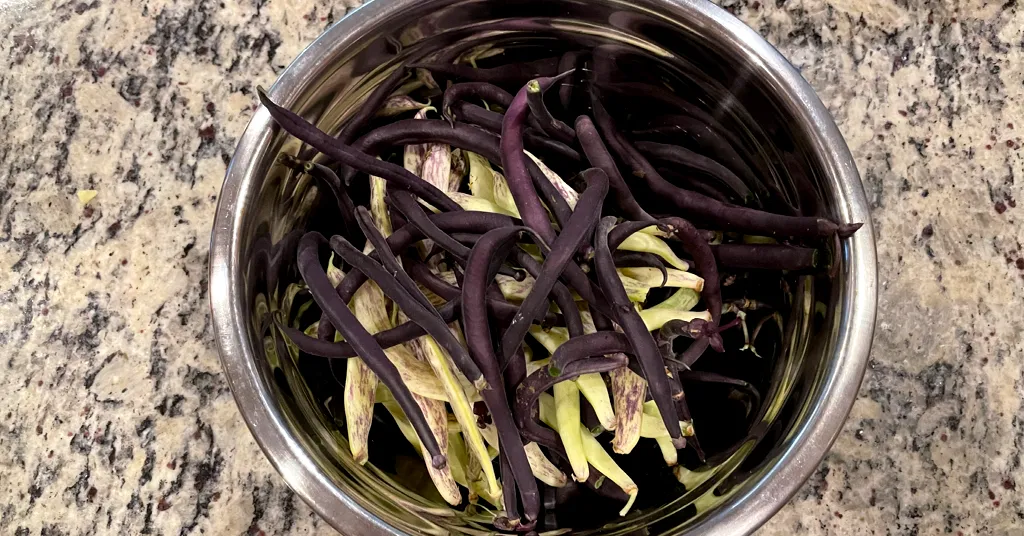
What You Need to Can Green Beans
Canning green beans might sound complicated, but with the right tools and preparation, it becomes quite easy for any home food preserver. Gathering all your equipment and ingredients before you begin makes the process much smoother. Let’s walk through what you need to get started.
Essential Tools and Supplies
When it comes to canning green beans, having the right tools is just as important as the recipe itself. Here’s a list of essentials, along with a few tips to keep everything running smoothly:
- Pressure Canner: Because green beans are a low-acid food, you need a pressure canner to ensure safety. Never substitute water bath canning for this recipe—it isn’t safe for vegetables like green beans. Review manufacturer instructions for setup.
- Cutting Board and Knife: These are important for trimming and cutting your green beans into the right size. A sharp knife makes all the difference.
- Headspace Measurer and De-bubbler: Precision matters when canning. These tools ensure you leave the correct amount of headspace and remove air bubbles from your jars.
- Jar Lifter: Moving hot jars safely is key. A jar lifter offers a secure grip and protects your hands from burns.
- Quart or Pint Sized Canning Jars
- Regular or wide-mouth canning lids (depending on what jars you are using)
- Regular or wide-mouth canning rings (depending on what jars you are using)
- Water kettle: You can use this to heat water for packing green beans.
Always double-check that your equipment is in good condition. Any faults in materials (chipped jars, defective lids) can compromise the quality and safety of your canned food. For more on essential tools, you can also explore Safe and Tested Canning Resources to keep your preservation game strong.
Ingredients for Canning Green Beans
When it comes to ingredients, simplicity is key. Here’s what you’ll need:
- Green Beans (You will need 4 1/2 pounds to 7 1/2 pounds of Green Beans. This will yield about 6 pint jars or 3 quart jars depending on how tightly you pack the beans into the jar.)
- Salt (optional) (1/2 tsp per pint jar or 1 tsp per quart jar)
- Hot Water
You will need 4 1/2 pounds to 7 1/2 pounds of beans. This recipe can be used for Green Beans, Hull Beans, Italian Green Beans, Pole Beans, Purple Beans, Snap Beans, and Wax Beans.
Washing Jars and Preparing Equipment
Proper preparation is a key step when canning. Clean tools and well-maintained equipment ensure safety and help prevent spoilage during storage.
- Clean Your Jars and Lids: Wash them in hot, soapy water and inspect for defects. Check for cracks, chips, or scratched surfaces that might affect the seal.
- Heat Jars: Place cleaned jars in hot water to prevent cracking when filled with hot water.
- Prepare the Pressure Canner: Follow the manufacturer’s instructions to set up your pressure canner. Add the correct amount of water, and ensure the rack is in place.
Trust me, taking the time to prep here can save you from stress later on.
Preparing Green Beans for Canning
Before you start canning, it’s important to properly prep your fresh green beans. These simple steps will get them ready:
- Wash the Beans: Rinse them under cold running water to remove any dirt or residue. Once washed, pat them dry or leave them to drain.
- Trim Ends: Using your knife and cutting board, remove the string (if needed) and trim both ends of each bean.
- Cut Into Pieces: You have the option to leave the beans whole or cut them into 2-inch pieces. For a uniform fit in your jars, slice or break the green beans into 2-inch pieces. This is not only practical for packing but also perfect for serving later!
- Blanching: While some may prefer blanching the beans briefly in boiling water before canning, this step is entirely optional.
The key is ensuring that the beans are clean, fresh, and ready for packing into jars.
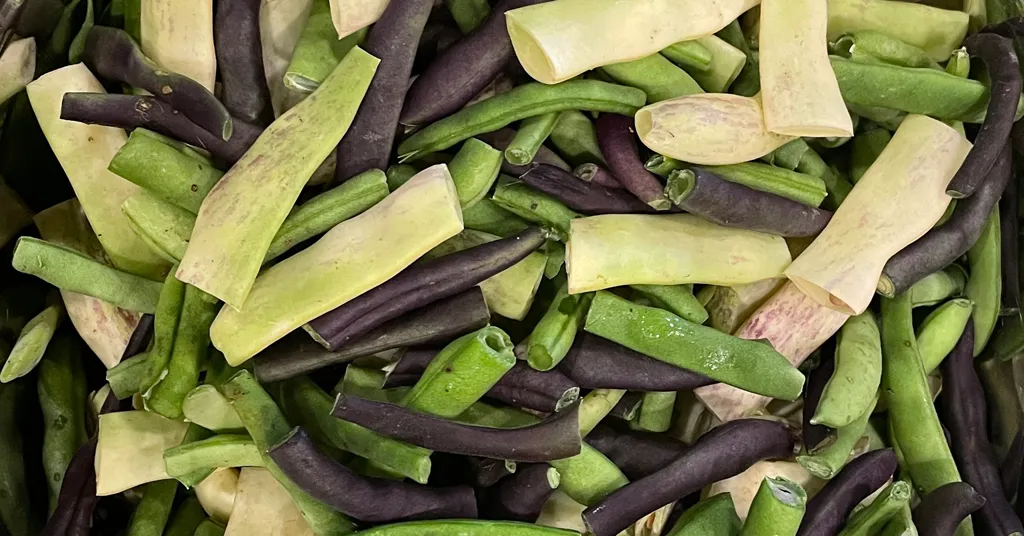
Step-by-Step Guide to Pressure Canning Green Beans
Pressure canning green beans is one of the best ways to preserve their fresh taste and nutritional value. I’ll cover the two primary methods of packing green beans and how to safely process your jars in a pressure canner, ensuring you end up with perfectly sealed, shelf-stable jars of green beans.
Choose your Canning Method
You can utilize either the Raw Pack method or the Hot Pack Method when canning green beans. The recipe below will include information on performing both methods so you can choose which one is right for you.
Raw Pack Method
The raw pack method involves packing raw, unheated green beans into jars before adding hot water. It’s quick and simple, making it a go-to option when you’re short on time.
Here’s how to do it:
- Preheat Your Water: Bring water to a boil, then lower to a simmer. An electric kettle or stovetop pot works great for this.
- Pack the Jar: Pack your prepared green beans tightly into the hot jars, leaving 1 inch of headspace. Don’t crush the beans; just use firm pressure to fit as many as you can.
- Add Salt (Optional): Sprinkle 1/2 teaspoon of canning salt per pint jar or 1 teaspoon per quart jar if you prefer a little extra flavor.
- Fill with Hot Water: Carefully ladle the hot water over the beans, keeping that 1-inch headspace. Use a headspace measurer for accuracy.
The raw pack method is all about simplicity. If you’re new to pressure canning, this method gives you impressive results with minimal effort.
Hot Pack Method
Hot packing involves briefly cooking your green beans before canning. It takes a little more time than the raw pack method but often results in better consistency and flavor.
Here’s the process:
- Boil the Water: Bring a large pot of water to a rolling boil.
- Blanch the Beans: Add the green beans to the boiling water and blanch them for 5 minutes. This helps soften the beans and often means fewer trapped air bubbles in your jars.
- Keep the Water Hot: Remove the beans and immediately reduce the heat to keep the cooking water at a simmer.
- Pack the Beans: Pack the drained beans into the hot jars. You’ll still need 1 inch of headspace here, just like with raw packing.
- Season and Cover: Add 1/2 teaspoon of canning salt per pint jar or 1 teaspoon per quart jar (optional). Ladle the hot cooking water over beans, maintaining your 1-inch headspace.
Hot packing may take more prep, but it’s well worth the effort if you want a longer-lasting, flavorful canned product.
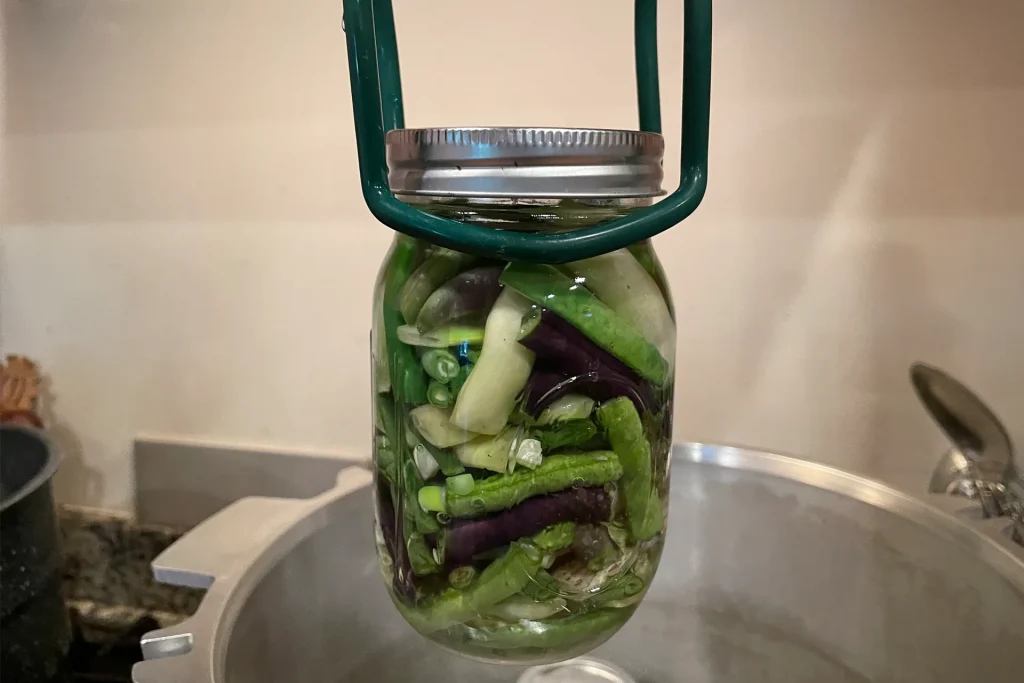
Processing in the Pressure Canner
Processing green beans in a pressure canner is essential because green beans are a low-acid food. Proper pressure and temperature ensure they’re safe for long-term storage.
Follow these steps:
- Remove Air Bubbles: Use a de-bubbler to release trapped air. Trapped air can compromise your jars’ seal and lead to spoilage.
- Clean the Rims: Wipe jar rims clean with a damp paper towel to remove residue that could prevent a proper seal.
- Attach the Lids and Rings: Position lids on jars, then screw the bands on until fingertip-tight—don’t overtighten.
- Place Jars in the Canner: Using a jar lifter, carefully lower filled jars into the preheated pressure canner. Repeat until all beans are used.
- Vent and Pressurize: Adjust the water amount if needed in the canner, then lock the canner lid. Bring to a boil over medium-high heat. Vent steam for 10 minutes before sealing the vent. Bring the canner to 10 lbs of pressure (adjust for your altitude).
- Process the Jars: Process pint jars for 20 minutes and quart jars for 25 minutes. Use a timer to keep track.
- Cool Safely: Once the timer ends, turn off the heat. Let the canner depressurize naturally before removing the lid. Wait 2 minutes after the pressure gauge reads 0, then open your vent. Always lift the lid away to avoid steam burns.
- Wait Before Moving: Leave jars in the pressure canner for 10 minutes after you remove the lid.
Checking the Seal and Storage
Sealed jars are the key to safely storing your canned green beans. It only takes a few minutes to check, but it’s a crucial step.
- Cool the Jars: After removing jars from the canner, place them upright on a towel or cooling rack. Let them cool completely for 12-24 hours.
- Test the Seal: Once cool, check each lid by pressing down in the center. If the lid flexes or pops back, the jar didn’t seal properly. Either re-process with a new lid or refrigerate and use quickly.
- Clean and Label: Remove the rings and wash jars to remove any residue. Label with the recipe and date for easy tracking.
- Store Properly: Keep your canned green beans in a cool, dark, and dry place. Properly stored, they’ll last for years!

Join My Preserving Guide Facebook Group
Expert tips, tested recipes, and vibrant discussions on canning, dehydrating, freezing, and all things food preservation!
Canning Green Beans Without a Pressure Canner: Is It Safe?
Canning your own green beans is incredibly rewarding, but safety should always come first. Some people wonder if they can skip the pressure canner and use a simpler water bath method instead. While this might sound tempting, especially if you’re new to food preservation, it’s important to understand why this isn’t a safe option for low-acid foods like green beans. Below, I’ll walk you through the risks and safer alternatives that still let you enjoy your fresh beans without compromising safety.
The Risks of Water Bath Canning for Green Beans
Let’s be clear: water bath canning is not a safe option for green beans. Here’s why. Green beans fall into the “low-acid food” category, which includes most vegetables, meats, and seafood. Low-acid foods are more prone to bacterial growth, particularly Clostridium botulinum, which produces the toxin responsible for botulism. This is a serious, potentially life-threatening illness that’s not worth risking just to skip a pressure canner.
Why doesn’t water bath canning cut it? The boiling water temperature (212°F or 100°C at sea level) simply doesn’t get hot enough to kill the spores of C. botulinum. These spores require much higher temperatures, specifically 240°F (116°C), which can only be achieved using a pressure canner. It may feel like an extra step, but in reality, pressure canning is your ticket to safe, shelf-stable green beans.
If you’re still feeling unsure, check out Safe and Tested Canning Resources, where you can learn more about proper canning techniques and why certain methods are preferred for low-acid foods. Trust me, a little research now will save you a lot of worry later.
Alternative Preservation Methods
If you don’t have a pressure canner or don’t feel comfortable using one just yet, there are other ways to enjoy your green beans all year. These methods might not offer that same pantry-stable convenience, but they’re just as satisfying and much safer than attempting water bath canning.
Here are a few alternatives to consider:
-
Freezing: This is one of the easiest ways to preserve green beans. Simply blanch them in boiling water for two to three minutes, then transfer to an ice bath to stop the cooking process. After they cool, pat them dry, pack them into freezer-safe bags, and store them in the freezer. The beans will last for months, keeping their vibrant color and crisp flavor.
-
Pickling: Turn your green beans into delicious pickled snacks! By adding vinegar, sugar, and spices, you raise the acidity level enough to make water bath canning safe. This method gives you versatile, tangy beans that are perfect alongside sandwiches, charcuterie boards, or as a zesty garnish for cocktails.
When it comes to food preservation, there’s no one-size-fits-all solution. If you decide to freeze or pickle, the focus should always be on preserving your green beans safely. These options ensure you get the most out of your harvest without compromising your health or peace of mind.
Did you try this recipe? Let me know your results in the comments below.
Additional pressure canning recipes you might want to try:
Recipe Card
Canning Green Beans
Equipment
- Water kettle or pot of hot water
Ingredients
- Green Beans You will need 4 ½ pounds to 7 ½ pounds of Green Beans. This will yield about 6 pint jars or 3 quart jars depending on how tightly you pack the beans into the jar.
- salt (optional) ½ tsp per pint jar or 1 tsp per quart jar
- Hot Water
Want to Save this Recipe?
Instructions
- Prepare your Pressure Canner according to Manufacturer instructions.
- Clean jars and lids with warm soapy water. Ensure the jars do not have any chips or bubbles in the glass. Heat jars in hot water.
- Wash your beans under cold running water then drain your beans. Remove the string and trim the bean ends with your knife and cutting board.
- Cut or break your beans into 2-inch pieces.
Raw Pack Method
- Bring water to a boil in an electric water kettle or a large pot on your stove. Reduce to a simmer, keeping your water hot.
- Pack your raw beans as tightly as possible (do not crush your beans) into your hot jar, leaving 1-inch of headspace (Measure with your headspace measurer).
- Add ½ tsp of salt per pint jar or 1 tsp of salt per quart jar if desired.
- Ladle or pour hot water over green beans leaving 1-inch of headspace.
Hot Pack Method
- Bring water to a boil in a large pot.
- Blanch beans in boiling water for 5 minutes. Remove beans.
- Reduce the heat of cooking water to a simmer. Keep the water hot.
- Pack hot beans into a hot jar, leaving 1-inch (2.5 cm) of headspace.
- Add ½ tsp of salt per pint jar or 1 tsp of salt per quart jar if desired.
- Ladle hot cooking water over beans leaving 1-inch (2.5 cm) of headspace.
Instructions Continued for recipes using either the raw pack or hot pack method
- Remove air bubbles from the jars using your de-bubbler.
- Clean your jar rim with a damp paper towel.
- Place the lid and the band on your jar. Adjust to fingertip tight.
- Using your jar lifter place your jar into your prepared hot pressure canner.
- Repeat until all beans are used.
- Adjust the water level if needed in the canner, lock the pressure canner lid, and bring it to a boil over medium-high heat. Vent steam for 10 minutes, then close the vent. Continue heating your pressure canner to achieve 10 lbs (69 kPa) of pressure (Make sure to adjust for your altitude) and maintain that pressure for the entire cooking time.
- Process Pint Jars for 20 minutes and Quart Jars for 25 minutes. Set a timer so it is much easier to remember how long you need to pressure can for.
- Turn off the heat when the timer is complete. Let pressure return to zero naturally. Wait 2 minutes after the pressure gauge reads 0, then open your vent. Remove your canner lid (making sure to lift it away from you so you don't get burned by the steam).
- Leave jars in the pressure canner for 10 minutes after you remove the lid. Using your jar lifer carefully move the jars onto a wire rack or kitchen towel to allow them to cool. When moving the jars try not to tilt them to the side as this could affect the seal of the jars. Allow your jars to cool for 12-24 hours before handling.
- Once cool, remove the canning rings from the jars. Wash your jars off to ensure no food residue on the outside of the jar from processing. Label your jar with the name of the recipe and date. This will help you remember what recipe you used to can and the date will allow you to use the oldest canned goods first.
Notes
Editorial Process
At Preserving Guide, I take pride in my thorough and impartial approach to recipe and product reviews. Read my editorial process for detailsRobin
Robin Phelps has been preserving food for her family for over 20 years. Today, Robin is a full-time home preservation blogger and coach. Join Robin to learn how to easily make delicious and safe homemade preserved items.


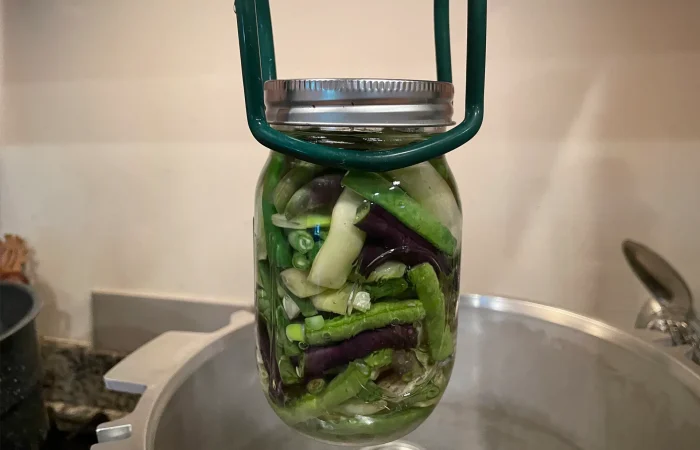
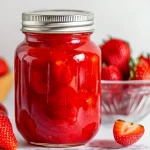
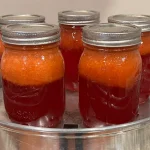
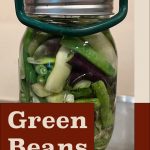
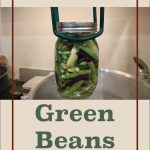
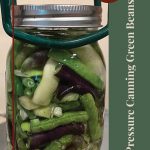
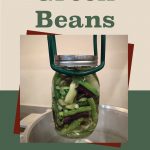
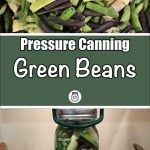
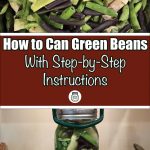

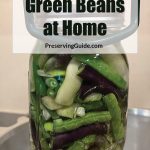
No Comment! Be the first one.